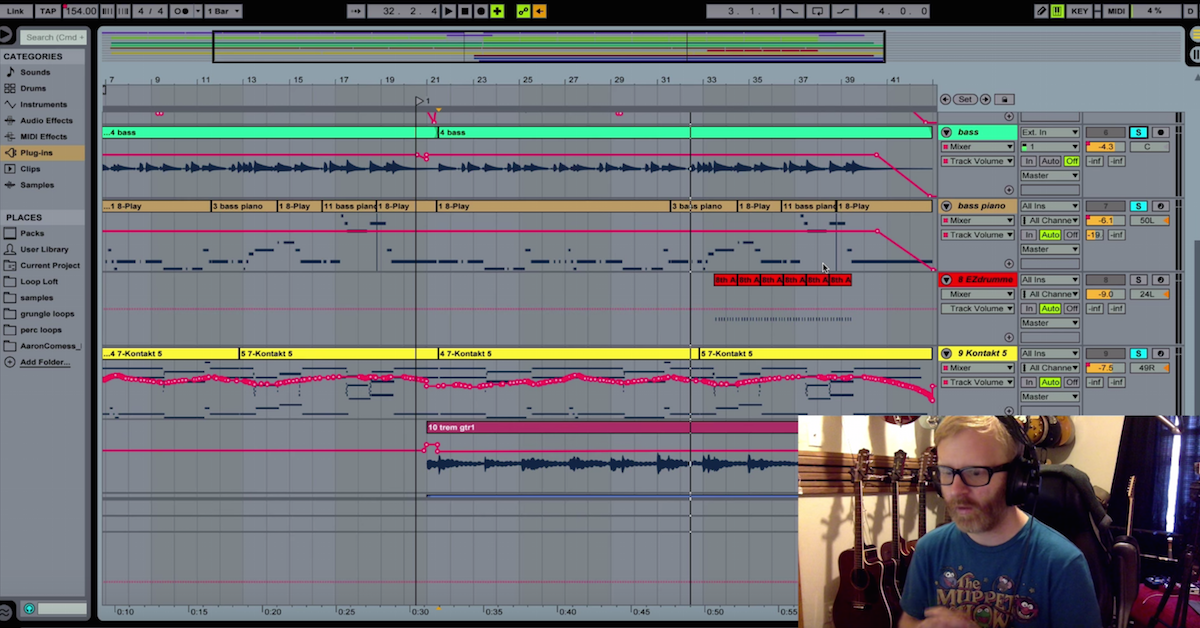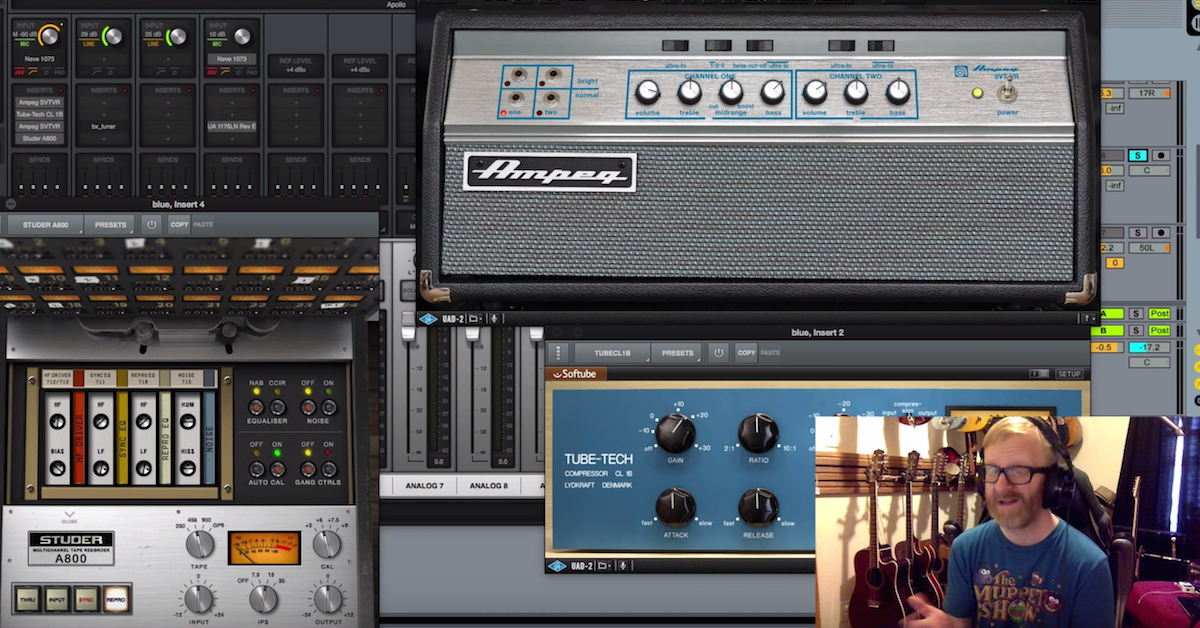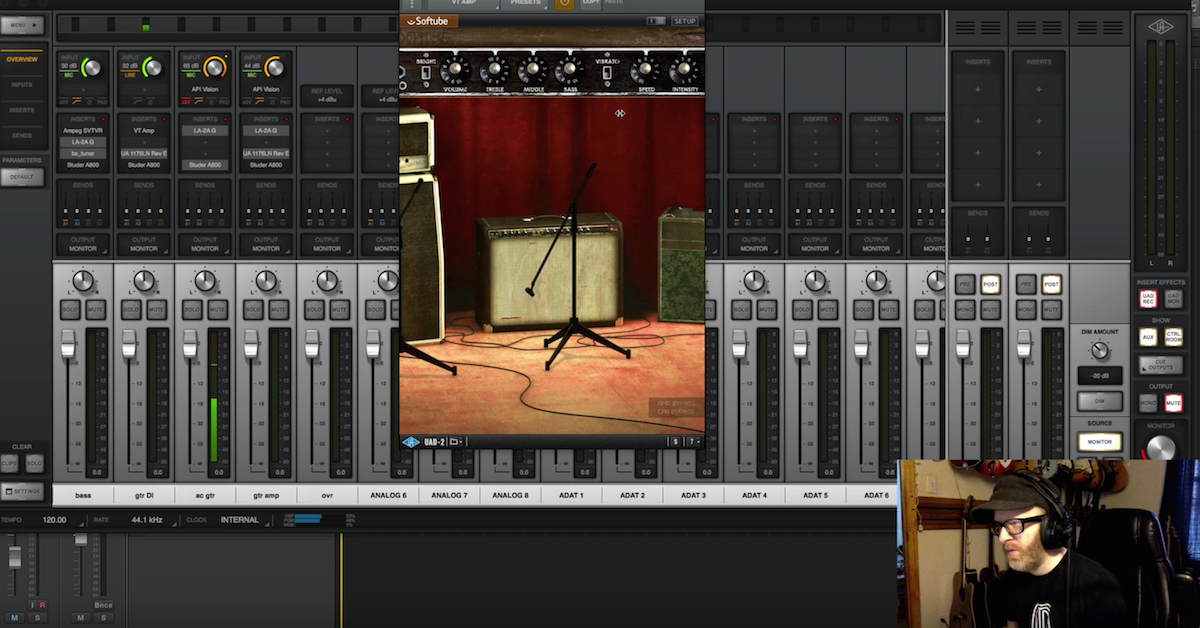Production Breakdown: Hodad from Mars by Mark Marshall
I want to do another production breakdown. In this episode, I’m going to talk about a composition I wrote called Hodad from Mars. I was writing for a TV show, and they were looking for a bit of a 60’s sci-fi with a little bit of humor in it, so I thought that I would go down the surf route, and I was really interested in getting a little bit of a theremin type vibe in there, because those early 60’s, late 50’s sci-fi films always seem to have a theremin or something of that nature creating those weird UFO sounds.
But I did something a little bit unusual to get the theremin sound.
[mix]
Knowing that I was going for an early 60’s style production, I knew that I wasn’t going to layer too many guitars and get too fancy. A lot of those recordings were fundamentally live with maybe a few orchestral overdubs if they had them, but there weren’t a lot of fancy guitar overdubs.
So I tried to think of it a lot like a band like The Ventures or something, what they would have done if they were in the studio cutting a song, which meant two guitars, an organ, drum kits, some percussion, and then this theremin track.
Let’s listen to each of the tracks and talk about them real quick.
We’re going to start with the drum loop, which I pulled from the Billy Martin collection from Drums on Demand.
[drums]
I really liked this loop because it wasn’t 100% true surf. It implied that though, so to me it kind of put it almost in between vintage 60’s surfer and a modern feel to it.
The bass I used a Fender Bass Six, which is like, an octave lower than a guitar and has six strings. I used this as opposed to a Fender P-Bass or J-Bass, because the pickups that are in it just have a little bit of a unique tonality to it. There’s just something in the twanginess to them that’s a little different than the heavy thudiness of a P-Bass.
Let’s listen to it.
[Fender Bass Six]
I played the bass with a pick and just ran it pretty much DI. I was running it through the Ampeg SVT bass head, which I do a lot.
This is the Bass Six that I was using, and you can see, it has these single coil pickups and I’m not sure of the specifics of the pickups, but you have some adjustments here to be able to mess with which pickups are being used and how much bass is on them.
So I may or may not have used the switches to roll off a little bit of the low end, but sometimes, I was doing some of these old style recordings, I’ll do that just to thin out the sound a little bit so it’s not super woofy.
Probably at this time, they weren’t even DI’ing guitars too much, so it was mostly through a miced amp. So I did the best I can to kind of emulate a little bit of that vibe.
Tambourine can kind of be important in a lot of these early 60’s music, so I did this.
[drums and tambourine]
I want to talk about the organ before we move on to the guitars. I got this really cool organ sound.
[organ]
It’s super vibey and I used the M-Tron plug-in, and I just have it on the organ. It’s the Mkii organ sound, which you’ll see there. I didn’t do any modifications to it. I just found it and rolled with it, because it had a lot of character to it.
We’re going to move on to guitars, and I’m going to start with the basic rhythm guitar track, which is going to be fairly clean and have a lot of reverb on it.
[clean guitar]
I tracked that with the reverb, just like they would in the 60’s. Let’s listen to the next guitar part, which is the melody line.
[clean guitar 2]
These are all real guitar amps. I used a Stratocaster into a Princeton Reverb, and miced with a good mic, and that was pretty much it.
Now, I harmonized that guitar melody with a second line that was just a third up. It’s just kind of a bit of a Ventures thing, so there’s technically three guitars on this, but the two melody lines are harmonized. Let’s listen.
[clean guitars, harmonized]
You’re going to notice that there’s not a lot of low end on the guitars. If I pop all three of them in at one time…
[guitars]
On their own they might sound a little thin. I did this intentionally just to keep a lot of the low end from interfering with the bass guitar and bass drum, and also things that were recorded in the early 60’s did not have a lot of depth and low end to them, so a lot of those surf and twangy guitars are actually a much narrower range of frequencies than you’d expect.
To go about this, because a lot of times, coming off the speaker of the cabinet, there’s quite a bit of low end, I roll off everything below 100Hz here. I have it on this Neve 1073 plug-in, and I just set that there, and I listen. I don’t do this blindly. I have to consider a little bit what era and what kind of song I’m recording. Sometimes you might want a lot of that low end, but often, I’ll try to think about the song and further down the line, like when it’s going to be mixed, and what parts I want to be naturally separated from one another.
This is not something that I always just leave in the hands of the mixing engineer. I think of mixing to be another stage in polishing it, but not necessarily the stage of people having to completely create the sonic identity of the song.
The theremin track in this song, I did something slightly unconventional. There’s an app for the iPhone and the iPad called BeBot, and I don’t know if — I’m hoping this will show up on the screen, but it’s a really cool app.
[theremin]
You can get in and really tweak it a lot to set it to scales, and you can create a lot of options inside.
I messed around with this a little bit to get it to sound a little more like a theremin. I got turned on to this after a jam session with an artist named Wally De Backer. A lot of people know him as Gotye. It was an improvisational jam session, and he showed up with an iPad with a couple of things on it. This was one of them, and he was just getting all of these incredible sounds out of it, like things I couldn’t even get out of all of my VST plug-ins, and analog synthesizers.
I just thought it was really cool, and after we got done with the session, I was asking him questions about it, and he was showing me a little bit of what he was doing, but BeBot was one of them, and it just kind of opened my mind to use it also as a creative tool. I think that sometimes when we’re dealing with iPads and iPhones, we kind of don’t really think of using them in professional applications, but they can be, and sometimes, there’s sounds that you can get on there that you can’t get anywhere else, so I just ran a feed out of my iPhone into my Apollo, and I got a good level and just recorded in.
Let’s listen to it.
[theremin]
I have a lot of reverb on the theremin sound — the BeBot sound, and I’m running first into a delay, actually. It’s the PSP Echo. I’m doing this just to lengthen the notes, so it’s a fairly slow delay, it just makes everything a little longer, and then I have it drenched in a lot of reverb on this EMT Plate. The only adjustment I made was setting the input filter at 250Hz, just to kill some of the low end, so that there’s no mud building up.
Let’s listen to just the reverb send.
[theremin reverb]
And that’s it. I think sometimes, simplicity is your friend. This is a very basic track. It didn’t take a lot to mix it, because in this era, they all sort of weren’t doing a lot of crazy automation and stuff, so compositionally, I kept that in mind a lot that I wasn’t going to need a lot of moving parts, right? It was more of a static kind of band configuration.





